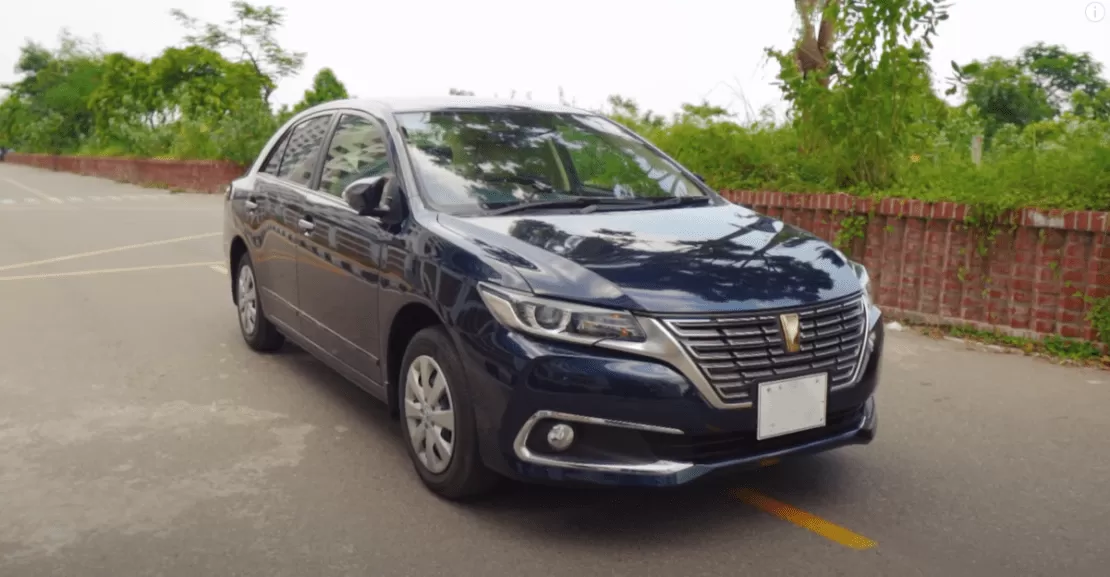Toyota Premio 2021 Introduction:
Explore the features and performance of the Toyota Premio 2021 in this in-depth review. While it’s not a direct comparison with the Igor Pepper, there are compelling reasons to delve into the details. Join us as we dissect the vehicle from under the hood to its driving experience.
Table of Contents
Toyota Premio 2021 under the Hood:
Opening the hood, the Toyota Premio 2021 reveals a 1.5L 2ZR-FE engine, belonging to the second generation. Unlike the earlier model with a 4-speed automatic transmission, this one boasts a CVT transmission, enhancing its responsiveness. Producing 108 horsepower and extra torque, the engine may lack excitement, especially when paired with the CVT, but it ensures a smooth and comfortable drive.
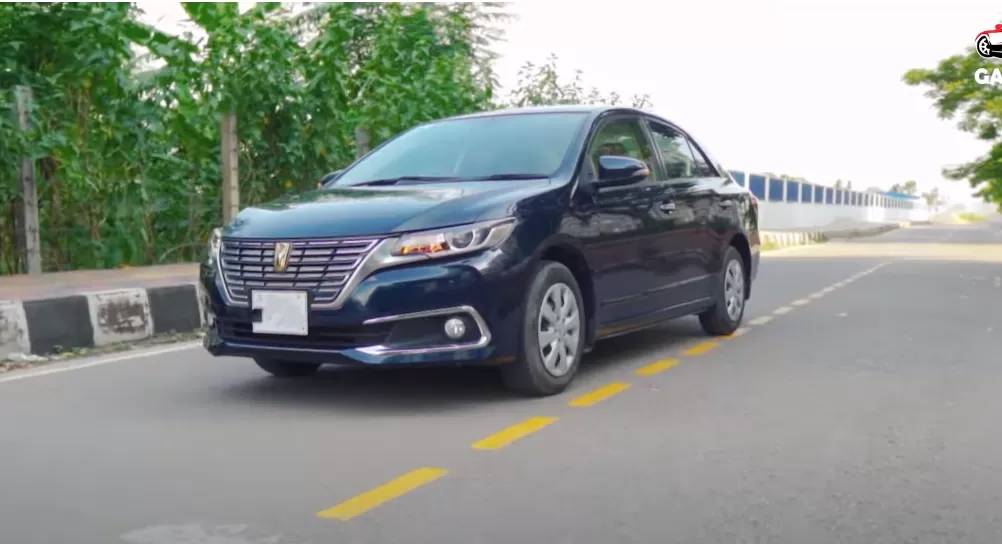
Toyota Premio 2021 Exterior Features:
Moving to the exterior, the LED projection dual beams handle low and high beams, outshining traditional halogen fog lights. The grille design draws inspiration from the regal Crown, offering a miniaturized premium look. The 16-inch alloy rims and front exhaust ventilated disc brakes contribute to the vehicle overall aesthetics and performance.
Toyota Premio 2021 Interior and Comfort:
Unlocking the car with Toyota’s keyless entry, the interior exudes comfort and sophistication. The spacious trunk easily accommodates multiple luggage sizes. Inside, the semi-leather seats with an appealing armrest and cup holders provide a comfortable experience. The dashboard features a well-designed veneer, and the digital cluster showcases the car’s advanced features, including parking sensors, forward collision warning, and more.
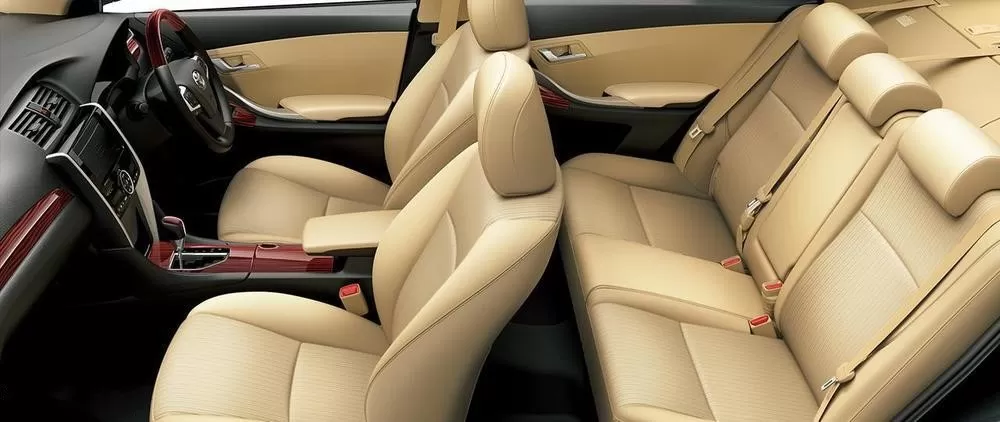
Infotainment and Climate Control:
The Toyota Premio 2021 boasts a thoughtful infotainment system, along with climate controls for a pleasant driving experience. The wood veneer and chrome accents add a touch of luxury, while the 12-volt outlet and ample storage space enhance convenience.
Toyota Premio 2021 Test Drive Experience:
Starting the car with the push-button ignition, the artificial leather-wrapped steering wheel offers multifunctional controls, including cruise control. The digital cluster provides comprehensive information, and the smooth ride, responsive steering, and effective braking make it an enjoyable drive. The suspension’s cushion-like feel adds to the comfort, making it an ideal choice for city driving.
Toyota Premio 2021 Conclusion: In conclusion, the Toyota Premio 2021 is a reliable and comfortable vehicle, excelling in its own right. While it may lack the exhilaration of some sports cars, its smooth ride, advanced features, and elegant design make it a compelling choice for those seeking a premium driving experience. Whether you prioritize comfort, technology, or aesthetics, the Toyota Premio 2021 delivers on multiple fronts.
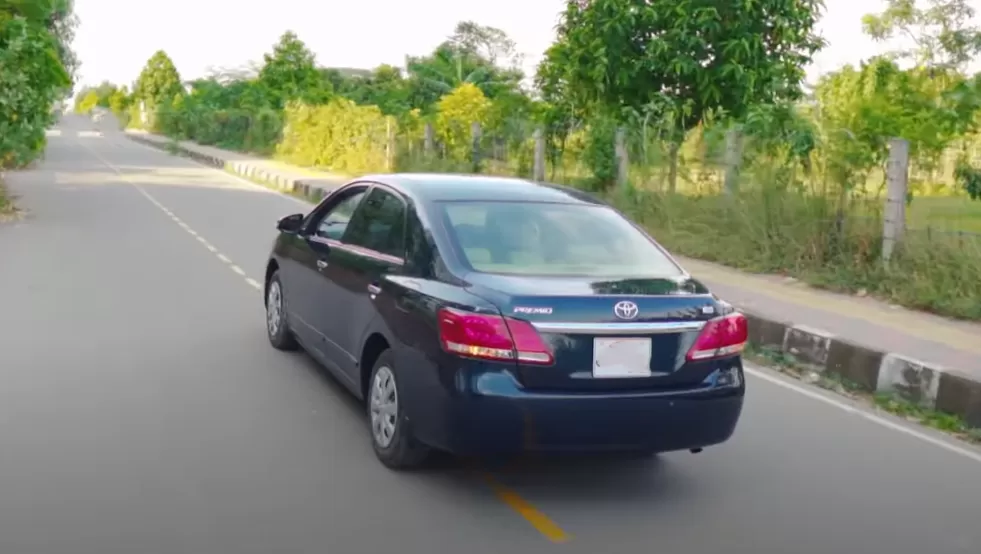
A Closer Look at Toyota Premium Models: F-L vs F-EX Package:
Introduction:
In today’s comparison, we delve into the distinctions between two premium Toyota models – the F-L and the F-EX. Following our recent review of the F-L, we now focus on the upgraded F-EX Package, highlighting the key differences that set these two cars apart.
Watch the Previous Review:
Before we dive into the details, catch up on our previous review of the F-L for a comprehensive understanding.
Model Differences:
The G in Toyota signifies greatness, and in the premium lineup, it comes in various configurations. While the F-L boasts a 1500cc engine, there’s also the F-L with a 1.5L engine and the F EX also 1.5L engine. Now, enter the F-EX – a model that elevates the driving experience to a whole new level.
Exterior Upgrades:
Visually, the F-EX stands out with alloy rims, a distinct feature absent in its counterpart, the F-L. These rims not only enhance the aesthetics but also contribute to an overall superior driving experience.
Interior Comfort and Luxury:
The real magic happens inside the cabin, where the F-EX truly shines. The leather seats in the G Superior, particularly the heated front seats, elevate the level of comfort and luxury. This is a significant upgrade compared to the standard seats in the F-L, providing a more indulgent driving experience.
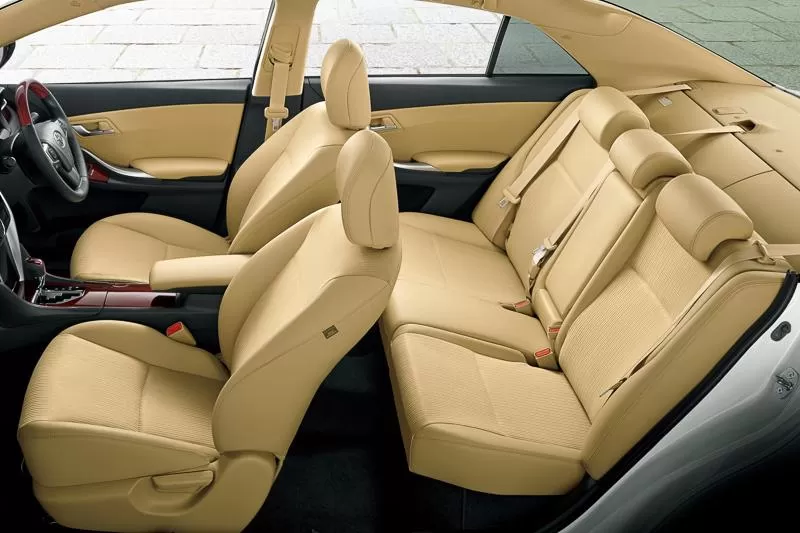
Electronic Seat Controls:
The F-EX takes control to another level with electronic seat adjustments. With just a touch of a button, drivers can customize their seat position for optimal comfort. On the other hand, the F-L relies on manual adjustments, a notable difference that enhances the overall convenience in the F-EX.
Conclusion:
In summary, the F-EX stands as a testament to Toyota’s commitment to delivering an unparalleled driving experience in the premium segment. With upgraded exterior features, luxurious leather seats, and electronic seat controls, the F-EX surpasses the F-L in terms of comfort and infotainment. Consider the F-EX if you prioritize a superior driving experience that combines style, luxury, and advanced features.
FAQ:
What engine does the Toyota Premio have?
Both cars were offered with three engine sizes; 1.5, 1.8 and 2.0 Liters. The 2.0-liter model received a CVT; each of the smaller engines was equipped with a four-speed automatic transmission.
How many kilometers does a Toyota gasoline engine last?
Gasoline engines have an average life of about 250,000 kilometers, but as we have mentioned, everything will depend on the maintenance and, above all, the quality of the lubricants used. If we use numbers, the 250,000 kilometers would be achieved at an average of 20,000 kilometers per year.
How many kilometers per liter does your car spend?
Generally speaking, an average car can travel between 8 and 12 kilometers per liter of gasoline under normal conditions. However, this figure can vary significantly. Fuel economy can be affected by several factors.
How do you know if the engine is in good condition?
Look closely at the engine and its surroundings, look at hoses and belts. Look if they have traces of any liquid, which would be evidence of leaks. Ideally, they should be dry, but not dry either. Sometimes with time and use, socks can become dry and/or burned.
How many kilometers per liter do you spend?
Generally speaking, an average car can travel between 8 and 12 kilometers per liter of gasoline under normal conditions. However, this figure can vary significantly.

